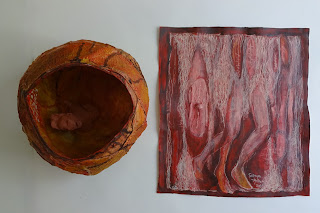The American City. I had dinner in a suburban community in Long Island, not too far away from the original Levittown. As I approached the house, through a labyrinth of cookie cutter houses in a flat landscape with tiny green frontal areas and two cars in the driveway, I could not stop wondering how the Levittown of the post- wars years became an ideal. Even beyond my comprehension, how that invention of instant neighborhoods, with box like structures, with New England accents, became part of an Anglo national mythology, strong enough to be imported and salable in a tropical colony.
While waiting for my dinner, I could not stop but looking at the fare of refined produce, wheat, sugars and bland flavors. I also meditated about how that suburban community has one of the highest cancer rates in the nation, possible because hazardous toxic waste were dumped in the area or maybe the unhealthy lifestyle in addition to the dependability on automobiles. I also thought about post- industrialism, neocapitalism, fast food and the commodification of life.
Then, I started reading about the U.S. city; how the postwar years saw the emergence of unplanned development, the relationship between the middle class flight to the suburbs and urban decline, and the phenomenon of Super malls, housing tracks, highways and parking lots. Cities were not build for people to enjoy, but for commuters and consumers that will drive from one point to another.
While I was reading about the U.S. city, somehow I saw the Puerto Rican city and I was deeply disturbed. Why conform to the American city model...Is it because of its strong economy and productivity, I asked myself. Why ignore the relationship between people, culture, public health, and city design?
While waiting for my dinner, I could not stop but looking at the fare of refined produce, wheat, sugars and bland flavors. I also meditated about how that suburban community has one of the highest cancer rates in the nation, possible because hazardous toxic waste were dumped in the area or maybe the unhealthy lifestyle in addition to the dependability on automobiles. I also thought about post- industrialism, neocapitalism, fast food and the commodification of life.
Then, I started reading about the U.S. city; how the postwar years saw the emergence of unplanned development, the relationship between the middle class flight to the suburbs and urban decline, and the phenomenon of Super malls, housing tracks, highways and parking lots. Cities were not build for people to enjoy, but for commuters and consumers that will drive from one point to another.
While I was reading about the U.S. city, somehow I saw the Puerto Rican city and I was deeply disturbed. Why conform to the American city model...Is it because of its strong economy and productivity, I asked myself. Why ignore the relationship between people, culture, public health, and city design?

Comments